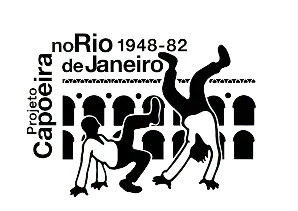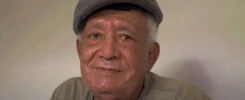2024 Global Martial Arts Forum (Chungju, South Korea, 10/7-9/24)
Wrap up in the Closing Ceremony by Minyeong Kim
Ladies and gentlemen, esteemed colleagues, and martial arts enthusiasts,
As we conclude the 2024 Global Martial Arts Forum, we are reminded of the profound journey we have shared last few days. A journey that not only explored martial arts as a form of self-defense or physical prowess but as a vibrant cultural and social force deeply intertwined with the identities, values, and futures of societies across the world.
We have gathered here under the theme “Martial Arts as Living Heritage: Its Past, Present, and Future,” Each presentation, and discussion has illuminated how martial arts transcend mere physical activity. They are living traditions that safeguard the cultural heritage of diverse communities while serving as powerful tools for social development.
Cultural Legacy of Martial Arts
Capoeira, born from the resistance of enslaved Africans in Brazil, is a powerful testament to resilience and creativity. It transforms oppression into art, using fluid movements to express freedom and identity. This martial art encapsulates the cultural synthesis of African and colonial Brazilian elements, making it not only a sport but a form of cultural resistance and celebration.
Similarly, Kok-Boru, a traditional horseback sport from Central Asia, reflects the nomadic heritage of the region. Rooted in centuries of tradition, it represents more than just a game. It is a social event that fosters community spirit and preserves a way of life that emphasizes bravery, teamwork, and respect for nature. Both Capoeira and Kok-Boru remind us that martial arts are powerful cultural vehicles that carry the values of community, endurance, and unity.
From these to Mongolia’s Bökh wrestling, Cambodia’s Kun Lbokator, and Turkey’s centuries-old oil wrestling, we have seen how martial arts reflect a people’s history, resilience, and creativity. These traditions, rooted in rituals and storytelling, have evolved, reflecting the social, political, and environmental landscapes that have shaped them.
The significance of these practices, many of which are recognized as UNESCO intangible cultural heritage, reminds us that safeguarding these traditions is crucial. Their continued existence allows future generations to engage with their roots, fostering a deep sense of identity and pride.
Social Impact and Development
But martial arts are not solely historical or cultural practices. They are, at their core, adaptable and dynamic tools for addressing pressing social issues. One of the strongest messages from this forum is how martial arts can serve as a powerful vehicle for youth empowerment and social cohesion.
As Professor Marc Theeboom emphasized in his keynote address, martial arts have a unique capacity to transform the lives of socially vulnerable youth. From building discipline and respect to enhancing emotional regulation and self-esteem, martial arts offer a pathway out of cycles of disadvantage. The example of Tahteeb from Egypt, where youth actively engage in heritage preservation while developing life skills, is an inspiring reminder of these traditions’ potential for social empowerment.
Similarly, the revival of inclusive Taijiquan for vulnerable populations demonstrated how martial arts can provide physical and emotional healing, fostering both individual well-being and community solidarity. We heard of the power of martial arts to turn vulnerability into strength—a lesson that resonates with practitioners and the broader society.
Taekkyeon
Master Park, Hyo-soon (on the right) and two other teachers of the traditional Korean martial art.
Geommu
Performance of the corean martial arts group Jimudan.
Unity and Peacebuilding
One of the most powerful takeaways from this forum has been the potential of martial arts to foster peace and intercultural understanding. The joint inscription of Ssireum by North and South Korea is a beacon of hope, demonstrating how shared cultural heritage can serve as a bridge to reconciliation and peace. Such initiatives are crucial in a world that often feels fragmented and divided. They remind us that even the deepest divides can be bridged through mutual respect and cultural exchange.
Additionally, the revitalization of Turkish traditional archery, especially after its UNESCO inscription, underscores its role in promoting gender equity and initiating discussions about gender equality.
Conclusion
In conclusion, the discussions and presentations over the past few days have shown that martial arts are far more than combat techniques. They are cultural treasures, social tools, and sources of identity and peace. As we leave this forum, let us carry with us the understanding that these traditions hold immense power. Power to transform individuals, to heal communities, and to build bridges across cultures and generations.
Thank you to everyone who contributed to this important conversation. Together, let us continue to support the growth and sustainability of martial arts, ensuring that they remain a vibrant part of our global cultural heritage.
Thank you.

References
The images in this post were taken by Matthias Assunção during the GMAF 2024.
For more information, programme, papers, photos, videos etc. see:
https://www.icmforum.org/index.php





